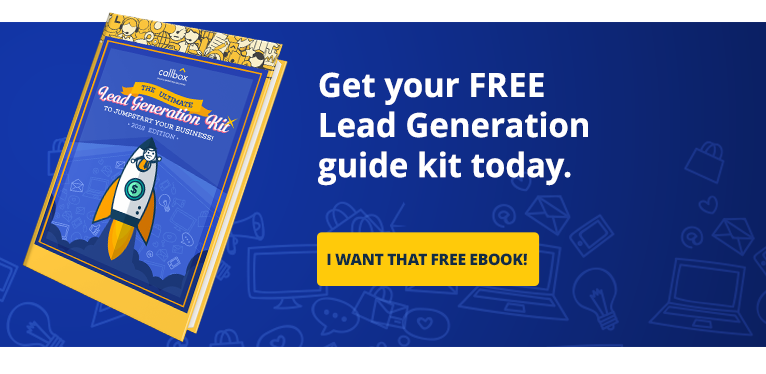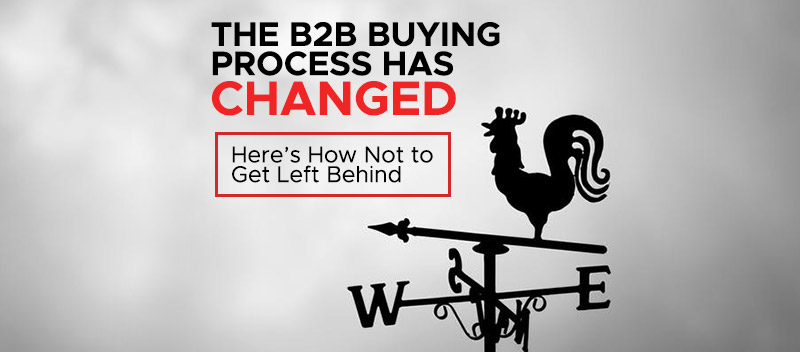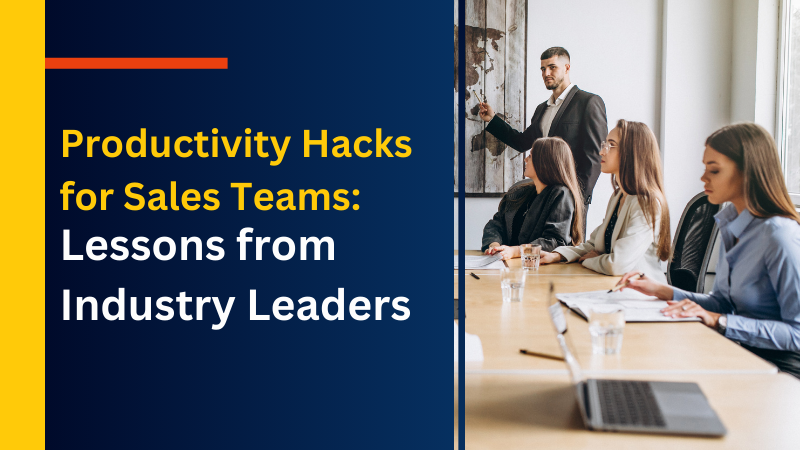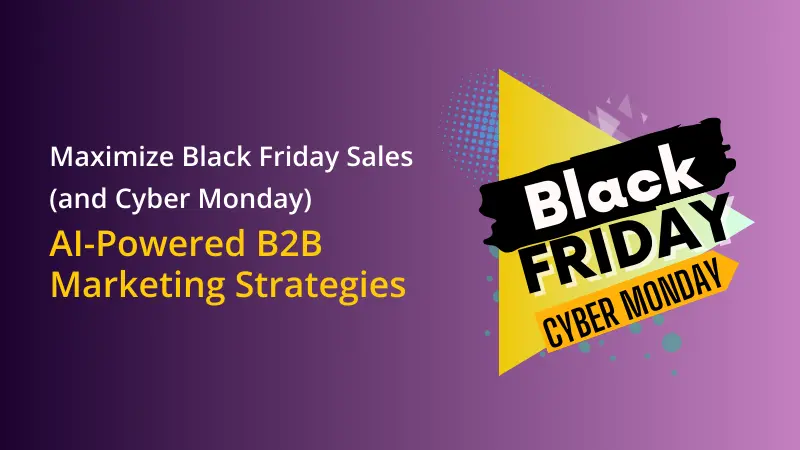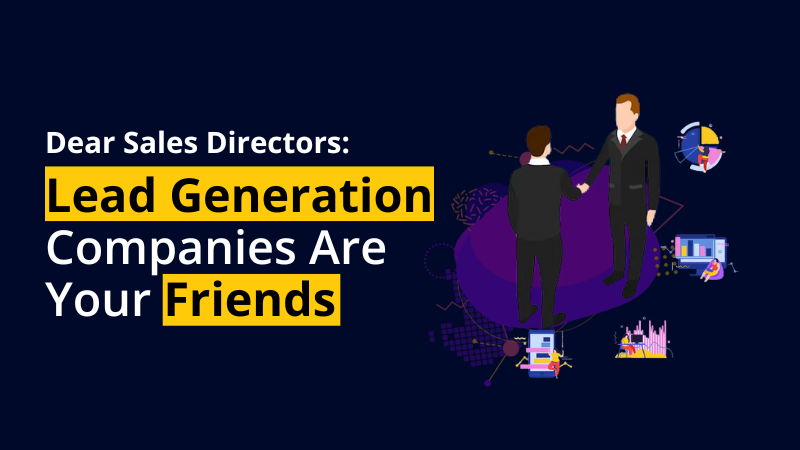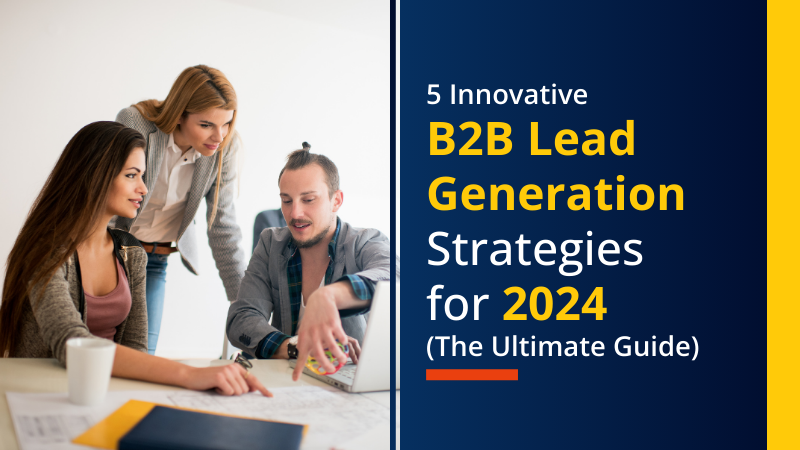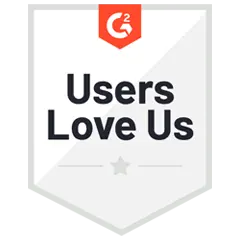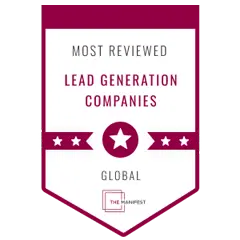There’s no denying it now. We’re not in Kansas anymore.The days when marketers took charge of the buyer’s purchase journey are long gone. Buyers now arrive at a purchase decision largely out of their own accord, with little to no direct involvement from marketing teams or sales reps. Buyers reach out to vendors only when they’ve learned all they can about the product or service, overturning our traditional roles as gatekeepers of information.
Nowadays, B2B buyers are already 57% into the purchase decision when they first reach out to a vendor. Prospects spend the bulk of that time researching about a business problem or solution on their own. That’s because only 13% of B2B buyers think sales reps genuinely understand their needs. As a result, less than 30% of B2B buyers want to talk to sales when purchasing.
What this means is that marketing is taking more and more of the responsibilities traditionally assigned to sales. Marketing’s role has expanded from initiating interest to educating prospects. In other words, the conversion funnel is also evolving along with the changing buying cycle.
Let’s take a look at how the old purchase process has evolved into what we now consider as the modern B2B buying landscape. More importantly, though, let’s talk about ways to make sure that your own marketing and sales processes keep up with the times.
B2B Buying Cycle Stages: Then and Now
In order to really understand how much today’s B2B buying cycle has changed, it helps to compare it with what it looked like years ago.
Related: The 4 Main Lead Generation Goals: What Has Changed & How to Reach Them
Traditional B2B Purchase Process
The B2B buying process used to be pretty straightforward. Businesses reached out to vendors and communicated with sales reps who, in turn, pitched them on the potential solution. If the buyer liked what she heard, she signs the contract.
Most traditional buying cycle models (including those still in use today) are based on some variation of the basic three-step buyer’s journey. As HubSpot explains, the process consists of the following stages:
#1 Awareness
This is the point in the buyer’s journey where the prospect realizes there’s a problem. It’s also the time when the prospect becomes aware that you or some other vendor probably has the solution.
During the awareness step, prospects focus on understanding as much as they can about the problem or pain point. They don’t really care that much about specific vendors or brands at this stage.
#2 Consideration
When potential buyers clearly specify the problem and narrow down possible choices, they’re in the consideration stage. This is the time when prospects start evaluating individual vendors and comparing them with one another.
Salesforce breaks this step down further into:
- Research (in-depth evaluation of each vendor)
- Comparison (going into product details, demos, and pricing)
- Justification (securing buy-in from other stakeholders)
#3 Decision
This is the last step in the process. At this point, the buyer believes your solution solves the problem but still needs to clear a few hurdles in order to become a valid purchase.
At the decision stage, potential buyers want to be reassured they’re making the right investment. Things like preparation, implementation, project costs, customer support, etc. rank high on their list of concerns during this step.
Related: Analysis: The Information Gathering Process of B2B Buyers
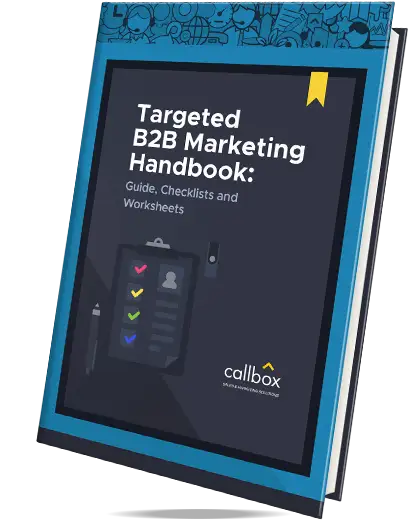
Targeted B2B Marketing Handbook: Guide, Checklists and Worksheets
Find, engage and convert the right prospects with the right message.

The New B2B buyer
According to Kantar Millward Brown, the traditional funnel diagram that most marketers have learned by heart is now officially dead. The linear sequence of buying stages has now been jumbled up into a complex web of prospect-initiated paths to purchase.
Today’s buyer might arrive at a purchase decision without even reaching out to the vendor, only communicating with a rep in order to finalize the deal. That means between identifying a problem and signing up for a solution, the prospect pretty much charts her own path to purchase.
That’s why you need to get really acquainted with the quirks and tendencies of the modern B2B buyer. It’s going to help you effectively remodel your sales and marketing funnel. Jessica Mehring over at the SnapApp blog points to some key characteristics of today’s B2B customers:
#1 They’re now better informed.
Forrester estimates that nearly 74% of B2B buyers carry out at least half of their research online before making an offline purchase. Meanwhile, Think with Google, the search giant’s marketing research arm, finds that B2B prospects perform a dozen online searches before visiting a vendor’s website.
The numbers are clear. Today’s B2B customers have access to more information, and they’re leveraging it to their advantage.
#2 They’re increasingly influenced by peers.
Data compiled by LinkedIn Business shows that 53% of B2B buyers rely on peer recommendations, while another 76% prioritize vendors suggested by their peers. That’s why 84% of B2B purchases begin with a referral.
As B2B buyers get more and more connected with their networks and peers, it’s not hard to see why word-of-mouth now drives many purchase decisions.
Related: How to Use SEO To Influence B2B Buyers On Social Media
#3 They’re part of a bigger group.
A 2017 HBR article puts the B2B buyer’s evolution into context. There are now more people involved in making B2B buying decisions, growing from an average of 5.4 stakeholders in 2015 to 6.8 decision-makers in 2017.
The more heads needed to give a nod of approval, the harder it will be to arrive at a decision. That’s because, as the number of stakeholders in the buying process increases, the more risk-averse B2B buyers become.
#4 They’re really into personalization.
All signs indicate that today’s B2B customers want a personalized, customized, and relevant buying experience. A recent survey from DemandGen Report finds that 75% of B2B buyers say it’s very important for website content to directly speak to their company’s needs. The same survey shows that 66% of B2B prospects rank industry-specific content as very important.
Forrester has also uncovered that more than 50% of B2B prospects want to receive personalized recommendations at every touch point. They expect robust customization and support across different channels, devices, and stages in the buying cycle.
Keeping Up with the New B2B Buying Process
It’s quite clear that things are no longer as simple or straightforward as they used to be. The B2B buying process has changed, and it continues to evolve. Marketers who thrive in today’s shifting landscape aren’t necessarily those with the biggest budget and resources, but those who can quickly adapt.
Related: Using Neuroscience to Better Answer 5 Questions Leads Ask Themselves Before Buying
Here’s how to adjust your funnel in order to meet the demands of today’s B2B buyers:
#1 Help them find what they need.
We’ve seen that modern B2B customers have access to more information. While this, of course, is a good thing, it becomes a problem when prospects have to sift through tons of material to find relevant information when doing their research.
One way to help buyers move from one point in their journey to the next is to make relevant information easy to find. Your website should be a resource for information that gets prospects closer to a buying decision. Think case studies, industry whitepapers, how-to articles, best practices, etc.
Related: Better Content Means Better Leads: Make the Most Out of Your Content
#2 Make sure that people have great things to say about you
Since peer reviews and recommendations shape the outcome of the B2B buying journey, it pays to build and grow your reputation as a leader in your industry. You do this, for example, by showing your expertise through participating on social media and online forums.
Also, B2B customers have now grown a bit skeptical of glowing reviews and ratings online. They’re now paying attention to what their peers are actually saying about a brand or solution. That’s why leveraging customer advocacy and referrals is a more viable route to take.
Related: How to get Business-Friendly Testimonials from your B2B Clients
#3 Learn how group buying decisions are made
We now know that the number of stakeholders in B2B purchases has increased, which can negatively impact the likelihood of decisions being reached. To ensure that your target prospects secure buy-in from all stakeholders, Consensus suggests focusing on the 7 components of group buying decisions in B2B:
- Problem (they have to believe you can solve their problem)
- Emotional connection (they need to believe in your team and your solution)
- Pricing (they have to be convinced the price is within their budget)
- Credible ROI (ROI that’s part of their company’s narrative)
- Timing and implementation requirements (the purchase needs to be a priority now)
- Proof points (both logical and social proofs)
- Questions and concerns (they need to be heard)
One key point to note, especially for big-ticket purchases, is that price needs to be distinguished from value. For risk-averse buying committees, an expensive price tag can spell the difference between a lost and closed deal.
#4 Target prospects based on behavior
Earlier this month, Marketingprofs published an article on generating leads based on B2B buyer behavior. The post talked about a lot of helpful insights, including five types of personalization strategies:
- Segment (based on industry vertical or segment criteria)
- Persona (based on specific buyer types)
- Stage (according to stages in the buying process)
- Account (based on target company)
- Lead (personalization based on individual lead)
Among these, persona-based personalization works best for most marketers today since it combines five areas of modern B2B buying:
- Role in the purchase process
- Fears and challenges
- Drivers and motivators
- Organizational goals and priorities
- Problems and issues
Related: How Behavioral Targeting Can Help You Achieve Your Bottom Line
These five components can help you deliver relevant, personalized experience that today’s B2B buyers expect.
The Takeaway
Whatever your conversion funnel looks like right now, it needs to align with how B2B buyers arrive at a purchase decision. Keep in mind that today’s B2B customers are more informed and more reliant on peer recommendations. They’re also part of a bigger group and are really into personalization. Your job now is to help them find the resources they need to make informed choices. Hopefully, that choice turns out to be your solution.
Read our latest marketing news or Subscribe to our newsletter!
Dial +1 888.810.7464 / 310.439.5814
Grab a copy of our FREE EBOOK, The Ultimate Lead Generation Kit Ebook! Updated with links to the best and latest techniques that will help generate quality sales leads for your business
